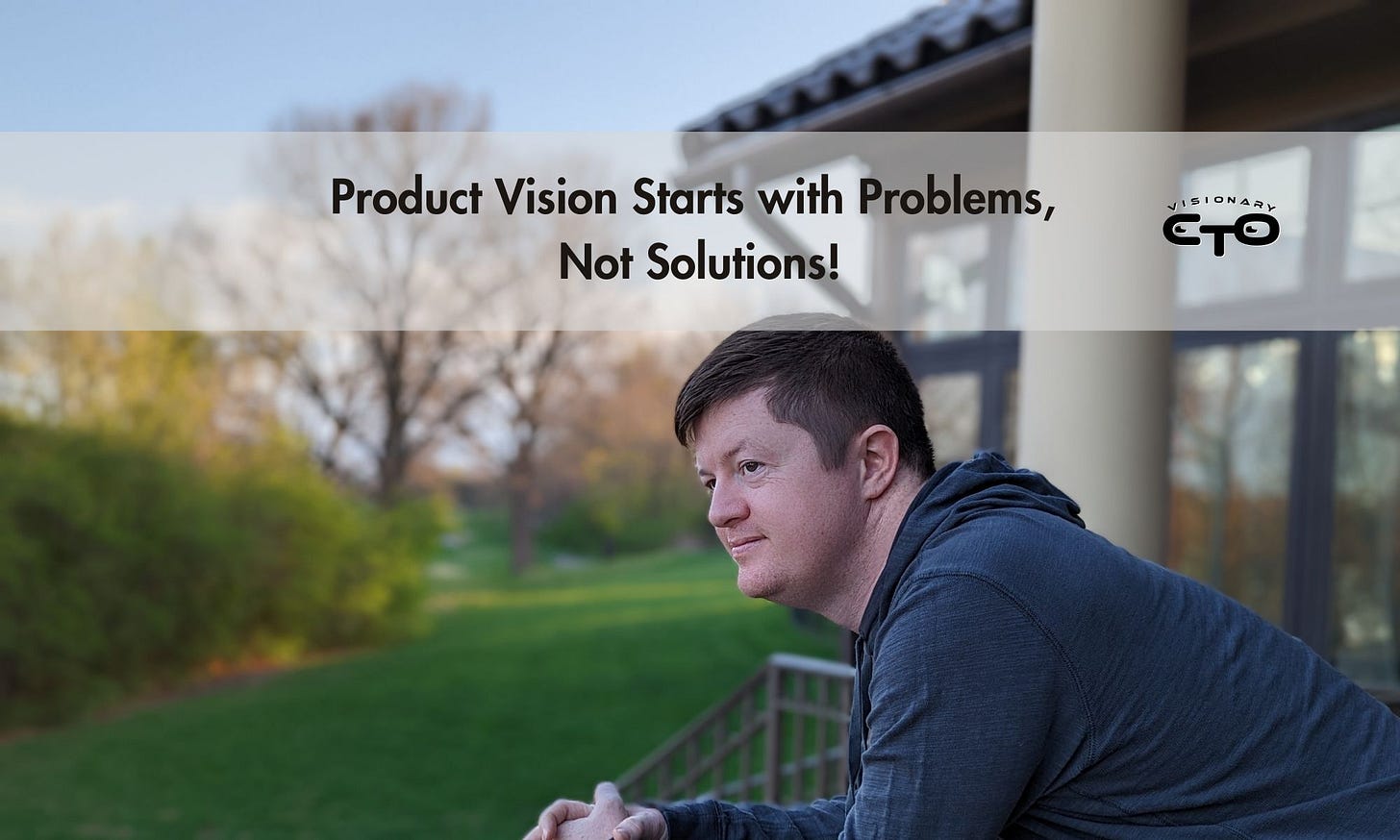Product Vision Starts with Problems, Not Solutions
Developers need to avoid building the most elaborate solutions for the simplest problems
In the world of software development, it's tantalizing to dream about crafting the most intricate piece of software, endowed with every possible feature you can imagine.
The thought of designing something that's unprecedented in its flexibility and capabilities is, undeniably, exciting.
However, it's here that many developers, brimming with enthusiasm, veer off track. Instead of starting with a solution-centric mindset, the true path to a successful product vision begins with identifying and understanding the problem.
If you aren’t careful, your development team will make the solution more complicated than the problem itself.
Missing the Mark: The Risk of Overengineering
The allure of innovation often pulls developers towards the 'cool' and the 'new'. There's a rush that comes with ideation – imagining all the bells and whistles a software could possess. However, when blinded by this allure, we run the risk of overengineering. This is where we pour resources, time, and energy into building features that, while impressive on the surface, don't cater to the actual needs of our users. Essentially, we end up missing the very problem we set out to solve.
My Scheduling Dilemma
Take my experience with my startup, At Capacity, as an example. I found myself at the crossroads of this very dilemma. My challenge was figuring out an effective system to control the scheduling of ads.
The technical part of me instinctively yearned to create a system that could meticulously control ads, breaking them down hour by hour for a multitude of reasons. A vast, intricate scheduling system was in my sights.
But on stepping back and truly contemplating, I realized that the actual problem was much simpler: the need to turn off ads during weekends. Instead of an elaborate, complex mechanism, all that was required was a straightforward checkbox to disable ads on weekends.
The vast scheduling system, while undoubtedly impressive, was a solution to a problem that didn't exist.
Developers need to avoid building the most elaborate solutions for the simplest problems.
Seeing Through the User's Lens
When building software, it's not about what we as developers think is cool or groundbreaking. Instead, it's about what the user genuinely requires. Their pain points, needs, and desires should be the focal point of any product vision. To make software genuinely user-centric, the user experience should mirror their thought processes and address their problems in ways they comprehend and value.
One might argue that a more extensive system offers room for expansion or anticipates future needs. While that's not entirely untrue, it's vital to strike a balance. Overcomplicating a system from the outset can alienate users, making them feel overwhelmed or lost amidst functionalities they never needed.
Embracing YAGNI: A Developer's Mantra
The principle of YAGNI, which stands for "You Aren't Gonna Need It", serves as a beacon for developers. It's a reminder that it's often more beneficial to refrain from adding features or functionalities unless there's a genuine, clear need for them. Overbuilding from the start can not only drain resources but can also clutter the user experience.
If you aren’t careful, your development team will make the solution more complicated than the problem itself.
The YAGNI principle doesn't mean stifling creativity or innovation. Instead, it advocates for focused and purpose-driven development. It's about ensuring that every feature, every line of code, is intentional and serves a well-defined purpose. This approach not only streamlines development but also ensures that the end product is aligned with user needs.
Conclusion
In the quest to build groundbreaking software, it's easy to be swayed by the endless possibilities technology offers. However, a successful product vision is rooted in problem-solving.
By genuinely understanding user needs, prioritizing them, and adopting a problem-centric approach, developers can create software that is not only innovative but also profoundly impactful. As you embark on your next project, remember: start with the problem, and let that guide you to the right solution.

